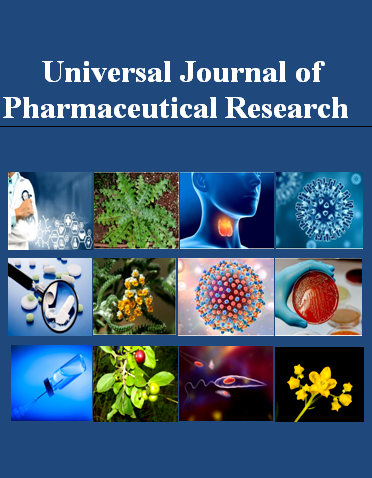CHITOSAN COATED ROSUVASTATIN NANOSTRUCTURED LIPID CARRIERS: FORMULATION, IN VITRO CHARACTERIZATION AND STORAGE ASSESSMENTS
Keywords:
Glyceryl monostearate, hyperlipidemia, nanostructured lipid carriers, Rosuvastatin calciumAbstract
Background and Objective: Rosuvastatin calcium (ROS-Ca) is a synthetic, highly potent third-generation HMG-CoA reductase inhibitor with significant hypocholesterolemic effects. The objective of this study was to develop and characterize nanostructured lipid carriers (NLCs) as a delivery system for the poorly water-soluble drug rosuvastatin calcium (ROS-Ca), with the aim of enhancing its dissolution rate and improving oral bioavailability.
Methods: ROS-NLCs is prepared by hot homogenization–ultrasonication technique then the prepared formulations were further characterized. Finally compare their characteristics to the corresponding a positively charged chitosan coated to develop new CH-ROS-NLCs. In this study, glyceryl monostearate (GMS) was selected as solid lipids and Transcutol® HP as a liquid lipid, to develop ROS-NLC (nanostructured lipid carrier).
Results: The physicochemical properties were achieved. The prepared ROS-NLC formulation was showed in nanometric size (121.6±6.2 nm) with encapsulation efficiency (63±0.2%). Furthermore, ROS-NLC and CH-ROS-NLC appeared almost spherical nanoparticles in morphology under transmission electron microscope (TEM). DSC, XRD and FT-IR analysis showed that ROS was miscible, compatible, and incorporated into NLCs in amorphous form not in native crystalline state.
Conclusion: The previously results showed that ROS-Ca was successfully encapsulated into nanostructured lipid carriers (NLCs) which coated with chitosan CH-ROS-NLC to overcome the above-mentioned defects and, it was ensured that nanostructured lipid carriers have high beneficial effect for enhancing and improving the oral bioavailability of poorly water-soluble drugs such as Rosuvastatin.

Peer Review History:
Received 9 April 2025; Reviewed 12 May 2025; Accepted 22 June; Available online 15 July 2025
Academic Editor: Dr. DANIYAN Oluwatoyin Michael , Obafemi Awolowo University, ILE-IFE, Nigeria, toyinpharm@gmail.com
, Obafemi Awolowo University, ILE-IFE, Nigeria, toyinpharm@gmail.com
Reviewers:
 Dr. Areen Alshweiat, University of Szeged, Hungary, areen.alshweiat@hu.edu.jo
Dr. Areen Alshweiat, University of Szeged, Hungary, areen.alshweiat@hu.edu.jo
 Dr. Awofisayo, O Abosede, University of Uyo, Nigeria, shalomgirl08@yahoo.com
Dr. Awofisayo, O Abosede, University of Uyo, Nigeria, shalomgirl08@yahoo.com
Downloads

Published
How to Cite
Issue
Section
Copyright (c) 2025 Universal Journal of Pharmaceutical Research

This work is licensed under a Creative Commons Attribution-NonCommercial 4.0 International License.









 .
.